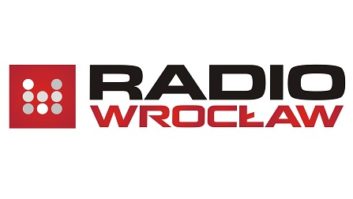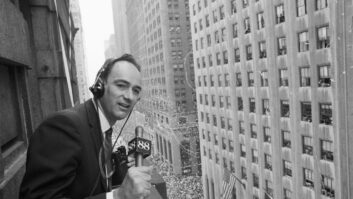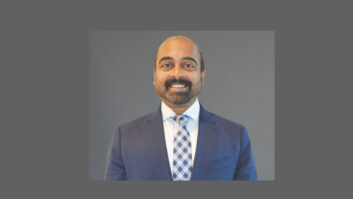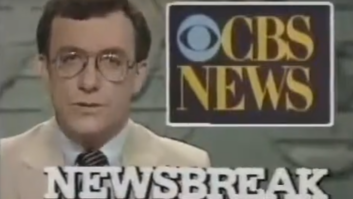
Virtual News Center’s News Dashboard software records a newscast for WENG(AM), Englewood, Fla. The software manages written copy and audio clips for each of the company’s markets; it includes editors for news stories and newscasts, and a prompter module to allow newscasts to be recorded as-live. It handles FTP upload and sharing among anchors and reporters.
It’s not unusual for broadcasters to rely on outside suppliers for talk shows, voice-tracked announcers, format consultation and even contests. But if the bedrock of a good radio property is its local news, weather and sports, as many argue, how could anyone outsource these services?
“Even 10 years ago it would have been difficult,” said Scott Roberts, 49, founder and executive vice president of technology for Virtual News Center, a company that provides exactly these features on a customized basis for some 200 stations in 150 U.S. markets.
“It’s partly due to the wide availability of broadband Internet,” he said. “We can easily have content redistributed in MP3 format via file transfer protocol, and we can deliver it in near-live time. We provide traffic in some markets, and it’s sent to the station two minutes before it airs.”
Roberts started in radio as a high-school sophomore in Pratt, Kan., playing spot inserts for Kansas City Royals baseball broadcasts. He has been a radio operations manager; a broadcast journalist; an emergency medical services dispatcher and EMT; and an Internet entrepreneur who owned Web hosting and design businesses. Virtual News Center is his fifth startup, “the one that’s developed the most staying power,” he said.

One of Virtual News Center’s freelancers, Dave Alpert, sits at his home studio. Stations can obtain their choice of anchor voices, and anything from three localized newscasts a day to hourly reports around the clock, and this service can cost between $500 and $5,000 a month, depending on the quantity of material.
“Generally, we are about one-third to one-half the cost of a fully-burdened staffer, including benefits,” said Roberts.
Said Jeff Singer, operations manager for KVOT(AM)‚ DMC Broadcasting in Taos, N.M., “With downsizing, everybody is trying to find a way not to hurt the station or the listener. We found that Virtual News Center fills a major hole for us.”
The company bills in excess of half a million dollars annually but is itself decentralized. Roberts is in Wichita, Kan.; news director/partner Jen Austin resides in Dallas; and another partner, Joel Dearing, is based in Indianapolis. If a client station requests that its news be delivered in Spanish, a group of talent in the Dallas area can handle that.
So how can news be localized for a specific market while the people preparing and delivering it may be thousands of miles away?

Dave McBride’s “Radio Boynton” in Boynton Beach, Fla., has an effective bare-bones setup. Dearing, 58, is executive vice president of business development and a four-year veteran of Virtual News Center.
“If there is a breaking story, we have a couple of avenues,” he said. “Obviously, we are as good as the local people want us to be. So if they see there’s a big story, they pick up the phone, text or email us, and we jump on it. In some cases, we can put a scanner in the market and feed that information back to us. That would be an added service for the station, monitoring the scanner during certain hours. We don’t handle international news, and national news is on a very limited basis. What we cover by various means is the local content, the fires, the county government, the school board; and we dig for it.”
FEET ON THE GROUND
“When selling new stations we get one question over and over,” said Roberts. ‘How do we handle something like city council?’
THE GEAR
Virtual News Center founder Scott Roberts often is asked by freelancers what kind of gear they’ll need. He provides these recommendations:
MINIMUM EQUIPMENT:
• PC (desktop or laptop) running Windows 7 or later, anything built in the last four years is more than enough, 4 GB RAM recommended. Cost $169 (example: Professional Dell 745). Monitor is extra.
• Microphone. $49 (example: Blue Microphones Snowball iCE Condenser Microphone, cardioid) Of course, some way to get the audio into the computer is needed, too. If one doesn’t have a USB mic or a mixer, there are a number of USB interfaces that will work. I record into a Marantz PMD660 when I travel and have a USB mixer at home.
• Audio editing software. Audacity is free; there are several higher-cost options
RECOMMENDED EQUIPMENT:
• PC $169
• Monitor: $129 (Example: Asus VS228H-P 22-Inch Full-HD 5 ms LED-Lit LCD Monitor)
• Studio microphone (several of our people use EV RE20s and the like; I get great results with a $100 Sterling ST-51)
• Mixer: $105 (Example: Alesis MultiMix 4 USB FX 4-Channel Mixer with Effects Plus USB Audio Interface)
• Boom: $35 (Example: Neewer Broadcast Studio Microphone Suspension Boom Scissor Arm Stand with Shock Mount and XLR Male-to-Female Cable)
• Shock Mount: $16 (Example: Black Universal Microphone Shock Mount for Large-Diameter Condenser Mic Metal)
He adds: “Software-wise, we have a proprietary copy management system, which I wrote. I install that remotely for our freelancers during the setup phase. We recommend using Website-Watcher (http://aignes.com) to monitor Internet sources. It costs $50, but will save at least that per month in time spent checking for updates on websites. We also recommend using a browser other than Internet Explorer, and at this point, we are a PC-only shop. Mac users have to run Windows via Parallels, Bootcamp or the like in order to work with our software.”
“There are two answers, the first of which is you keep local feet on the street, like a sales person, an intern or a part-timer, who gets the audio and ships it back to us. The second answer is we can do next-day coverage by calling in. If you want it first thing in the morning, the legitimate way to cover that is to have a body there. We call this solution ‘One Plus Us.’ It’s a way stations can keep its mic flag in people’s faces and increase the quality and consistency of the newscast”.
FREELANCE FLEXIBILITY
Virtual News Center relies on a growing network of freelancers. Currently, the company uses 28 anchors and three people dedicated to gathering and reporting news. While this offers flexibility to its part-time employees, it also presents some challenges.
“If we bring the right people in the door, then things go really well,” said Roberts. “But who doesn’t occasionally make a mistake in hiring? The depth of our bench allows us to very quickly make a change as needed.”
And how does management keep in touch with the far-flung voices and news gatherers?
“A virtual environment is much different from face-to-face,” he said. “You don’t have an opportunity for water cooler chats. You don’t get to have that quick ‘all-hands’ meeting. We are dealing with people in multiple time zones that have other jobs. We sometimes use video conferencing and recorded presentations for them. But it’s really vital that they understand the difference between being an independent freelancer and a full-time employee. We want our people never to think in terms of ‘that’s not my job.’ That’s a meaningless phrase to us. We want our freelance talent to have an entrepreneurial spirit.

Don Murley’s home studio in rural Pennsylvania rivals those of many radio stations, including an interview area and seven video/audio production computers. “Our people are paid by the number of minutes of finished material they produce,” he said. “And our typical anchor works about two to three hours a day. We like to have our talent working for the same stations week after week. If you look at the workflow on a bar graph of a dollar, the gathering and writing are the most expensive. Voicing news is a smaller percentage.”
Don Murley is an anchor who spends between three and four hours a day creating newscasts for stations in 12 markets.
“Virtual News Center has given me the opportunity to utilize my radio skills as an announcer, writer, editor and producer, and keep in touch with the ‘business,’ without going into a radio station every day,” he said. “I find it best to work with multiple monitors because you need to have several programs open at one time.”
Virtual News Center offers a menu of services including Web-only content, Web plus broadcast or even written newscasts that can be delivered by local station voice talent. The company uses proprietary software created by Roberts that enables easy two-way communication with its clients.
ONE PLUS US
Roberts feels customers get the best results by combining their resources with Virtual News Center’s service, in an arrangement called “One Plus Us.” He provided the example of KIRX(AM) in Kirksville, Mo.:
“We’re part of the news flow of the market, receiving all the email and faxes that come into the newsroom. Among them are the detailed meeting notes for the city council meeting. We do preview stories from those handouts, just like a person in the market would.
“KIRX sends a part-timer or an intern to the meeting, and they’ll grab a community member, the city manager or a council person in the hall after the meeting and do a quick interview. Often, they will edit the audio and write a story around it; this gives a training opportunity where we can guide them to better storytelling skills. Then our anchors use the followup story and audio clips the morning after the meeting.
“It’s the same cycle the story would have taken with an in-house news person, only streamlined in a way that lets each part of the process play to its strengths.”
“We try to be a partner with the station in getting things done the way they want them done,” said Roberts. “The most successful stations are those that treat us like we’re in the building. It’s not ‘set it and forget it.’”
In an age of voicetracking, many in radio view the use of distant talent as counter to true localism; so the outsourcing of news as practiced by Virtual News Center might seem even less local.
“This is an objection that’s been raised since we started doing this in 2005,” Roberts wrote in a followup email to Radio World. “We’ve done some informal surveying on this topic, and our panelists have returned the same response consistently: Where the person reporting the news happens to be is much less important to them than the content of that newscast.”
Virtual News Center (www.virtualnewscenter.com) is also available on a barter basis in some markets.
Comment on this or any story. Email[email protected].
Ken Deutsch is a seasoned broadcaster. He says that unfortunately his season was when paisley ties were popular. He has written for Radio World since 1985.











